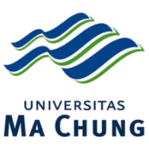A CODE MIXING USAGE ON SOCIAL MEDIA: A LINGUISTIC ANALYSIS OF VIDEO ON TIKTOK
Abstract
Code mixing is a common strategy in communicating among person who learn or use more than one language. This research has aimed to focus on analysing variety types and reasons of code-mixing used in Fathia Fairuza’s TikTok video. The study uses a descriptive qualitative to report and describe the result of analysis data. Theory by Hoffman was used to classify types which are intra-sentential, intra-lexical, and involving change of pronunciation. Hoffmans’ theory about motivation in using code-mixing was used in this study that includes talking about particular topic, quoting somebody else, being emphatic about something, interjection, and repetition used for clarification. The subject data in this study is Fathia Fairuza’s utterances on her TikTok video. This study has found that the most used type of code-mixing was intra-sentential, and intention of clarifying the speech content for interlocutor as the common reason. This study was aimed to bring knowledge about kind of code-mixing and motivation or purpose in using code-mixing on TikTok video.
References
Agus Adi Guna, I. K. (2024). An Analysis of Code-Mixing Used by the English Teachers. Jurnal Pendidikan Bahasa Inggris Undiksha, 11(3), 275–280. https://doi.org/10.23887/jpbi.v11i3.49010
Alazzam, S., & Alamaren, E. (2022). Syntactic Analysis of Intra-sentential Arabic–English Code-Switching Within Verb Phrase. e-bangi. 19(5), 136–151.
Bhatia, T. K., & Ritchie, W. C. (2014). The handbook of bilingualism and multilingualism. John Wiley & Sons.
Damanik, B. A. R. (2015). Code mixing on twitter user of teenager. Journal of English Teaching as a Foreign Language, 1(1), 30–44.
Dewi, C., & Ekalaya, Y. (2015). An Analysis of Outer Code Switching and Code Mixing in Indonesia Lawyers Club. In Literary Criticism Journal (Vol. 2, Issue 1).
Diyanty, P., & Heriansyah, H. (2021). E-ISSN 2528-746X Code Mixing: Why Do English Teachers Use It in the Classroom. In Research in English and Education (READ) (Vol. 6, Issue 4).
Ezeh, N. G., Umeh, I. A., & Anyanwu, E. C. (2022). Code Switching and Code Mixing in Teaching and Learning of English as a Second Language: Building on Knowledge. English Language Teaching, 15(9), 106. https://doi.org/10.5539/elt.v15n9p106
Fanani, A., & Ma’u, J. A. R. Z. (2018). Code switching and code mixing in English learning process. LingTera, 5(1), 68–77. https://doi.org/10.21831/lt.v5i1.14438
Fitamala Sari, N. (2022). Code Switching and Code Mixing In Classroom Presentation of Indonesian EFL Students. EDUCASIA, 7(2), 91–120. www.educasia.or.id
Grosjean, F. (2010). Bilingual: Life and reality. Harvard university press.
Gulzar, M. A., & Abdulrahman, A. A. (2013). Intra-sentential patterns of code-mixing between bilingual male and female teachers: A comparative study. European Journal of Scientific Research, 97(3), 411–429.
Haryati, H., & Prayuana, R. (2020). An Analysis of Code-Mixing Usage in WhatsApp Groups Conversation among Lecturers of Universitas Pamulang. Ethical Lingua: Journal of Language Teaching and Literature, 7(2), 236–250. https://doi.org/10.30605/25409190.180
Hasanen, A. (2024). “ Toi vika on big slay”: code-switching in Finnish TikTok comments. University of Jyväskylä.
Herman, H., Thao, N. Van, Purba, R., & Simanjuntak, N. S. U. (2022). Attracting Viewers through Advertisement by Using Code Mixing: A Sociolinguistics Study. Anglophile Journal, 2(2), 80. https://doi.org/10.51278/anglophile.v2i2.304
Hoffmann, C. (2014). Introduction to Bilingualism. Taylor & Francis. https://books.google.co.id/books?id=MVqgBAAAQBAJ
Jiang, Y.-L. B., García, G. E., & Willis, A. I. (2014). Code-mixing as a bilingual instructional strategy. Bilingual Research Journal, 37(3), 311–326.
Kahlke, R. M. (2014). Generic qualitative approaches: Pitfalls and benefits of methodological mixology. International Journal of Qualitative Methods, 13(1), 37–52.
Koban, D. (2013). Intra-sentential and Inter-sentential Code-switching in Turkish-English Bilinguals in New York City, U.S. Procedia - Social and Behavioral Sciences, 70, 1174–1179. https://doi.org/10.1016/j.sbspro.2013.01.173
Mabule, D. R. (2015). What is this? Is It Code Switching, Code Mixing or Language Alternating? Journal of Educational and Social Research. https://doi.org/10.5901/jesr.2015.v5n1p339
Maftoon, P., & Shakibafar, M. (2011). Who Is a Bilingual? Journal of English Studies, 1(2), 79–85.
Md Zolkapli, R. B., Mohamad, H. A., Mohaini, M. L., Wahab, N. H. A., & Nath, P. R. (2022). Code-Switching and Code-Mixing in the Practice of Judgement Writing in Malaysia. Pertanika Journal of Social Sciences and Humanities, 30(3), 1365–1382. https://doi.org/10.47836/pjssh.30.3.23
Meakins, F., & Stewart, J. (2013). Mixed languages. Contact Languages: A Comprehensive Guide, 6, 159–228.
Meigasuri, Z., & Soethama, P. L. (2020). Indonesian – English Code-Mixing in Novel Touché by Windhy Puspitadewi. Humanis, 24(2), 135. https://doi.org/10.24843/jh.2020.v24.i02.p04
Mustikawati, D. A. (2016). Code-Mixing and Code Switchingin The Process of Learning. Register Journal, 9(1), 24–51.
Novedo, N., & Linuwih, E. R. (2018). Code Switching and Code Mixing Used By Sarah Sechan and Cinta Laura in Sarah Sechan Talk Show. Seminar Nasional Ilmu Terapan, 2(1), D06-1.
Nurhayati, S. (2021). A Study of Code Switching and Code Mixing on Youtube Talk Show Curhat Bang Denny Sumargo with Cinta Laura. International Journal of English and Applied Linguistics (IJEAL), 1(3), 268–282.
Ormston, R., Spencer, L., Barnard, M., & Snape, D. (2014). The foundations of qualitative research. Qualitative Research Practice: A Guide for Social Science Students and Researchers, 2(7), 52–55.
Perlina, M., & Agustinah, M. (2022). Code-mixing by a content creator Gita Savitri Devi: How and why? Rainbow : Journal of Literature, Linguistics and Culture Studies, 11(2), 1–8. https://doi.org/10.15294/rainbow.v11i2.54913
POPLACK, S. (1980). Sometimes I’ll start a sentence in Spanish Y TERMINO EN ESPAÑOL: toward a typology of code-switching1. 18(7–8), 581–618. https://doi.org/doi:10.1515/ling.1980.18.7-8.581
Puteri, R. A. (2019). Code Switching and Code Mixing Used by Indonesian English Teacher. LangEdu Journal, 9 (1).
Rinawati, N. K. A. (2020). A Code Mixing Analysis on EFL Students’Casual Conversation at School. Lingua Scientia. Lingua Scientia, 27(1), 1–12.
Salamat, E., Mogea, T., & Maru, M. G. (2021). An Analysis of English Code Mixing Used by Agnez Mo. SoCul: International Journal of Research in Social Cultural Issues, 1(2), 93–102.
Sitinjak, E. R., Sinambela, E., Melysa, C., & Sitompul, E. (2020). An Analysis of Code Switching and Code Mixing on Teacher’s Function of Language Utterances. Cetta: Jurnal Ilmu Pendidikan, 3(3), 546–555.
Sutrisno, B., & Ariesta, Y. (2019). Beyond the use of Code Mixing by Social Media Influencers in Instagram. Advances in Language and Literary Studies, 10(6), 143. https://doi.org/10.7575/aiac.alls.v.10n.6p.143
Syafaat, P. M. F., & Setiawan, T. (2019). An Analysis of Code Mixing in Twitter. Proceedings of the International Conference on Interdisciplinary Language, Literature and Education (ICILLE 2018), 276–281. https://doi.org/10.2991/icille-18.2019.57
Wentker, M. (2018). Code-switching and identity construction in WhatsApp. The Discursive Construction of Identities On-and Offline, 109–131.
Wilymafidini, O. (2021). Code Mixing Used by the Teachers of Lpam English Course. Inovish Journal, 6(1), 65–74.
Yuana, L. (2022). Code Switching and Code Mixing in# NebengBoy. LEAD (Language, Education and Development), 1(2), 1–8.
Yuliana, N., Luziana, A. R., & Sarwendah, P. (2015). Code-mixing and code-switching of Indonesian celebrities: A comparative study. Lingua Cultura, 9(1), 47–54.

This work is licensed under a Creative Commons Attribution-ShareAlike 4.0 International License.
Open Access Policy
This is an open access journal which means that all content is freely available without charge to the users or their institution. Users are allowed to read, download, copy, distribute, print, search, or link to the full texts of the articles, or use them for any other lawful purpose, without asking prior permission from the publisher or the author. This is in accordance with the BOAI definition of open access.
![]() This work is licensed under a Creative Commons Attribution-ShareAlike 4.0 International License.
This work is licensed under a Creative Commons Attribution-ShareAlike 4.0 International License.

















